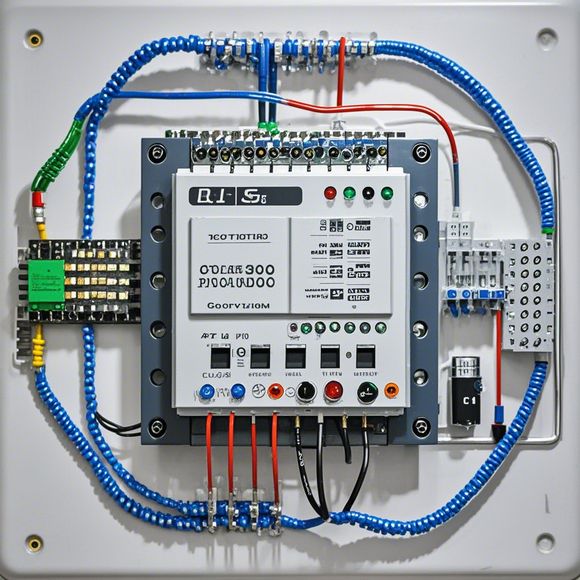PLC Control Principle and Its Application in the Manufacturing Industry
PLC, or Programming Logic Controller, is a crucial component in the industrial automation world. It's used to control complex manufacturing processes with ease and precision. The principle of PLC involves using microcontrollers and sensors to monitor and manipulate variables within a factory environment. These devices are programmed to respond to specific inputs and output desired results. In manufacturing, PLCs can be used to automate assembly lines, adjust machinery settings, and monitor product quality. They're also useful for managing inventory and ensuring safety in hazardous environments. By utilizing PLCs, manufacturers can save time, reduce errors, and improve efficiency, ultimately leading to cost savings and enhanced product quality.
Introduction:
In today's world, the manufacturing industry is constantly evolving, and the need for automation and precision control is growing. PLC (Programmable Logic Controller) systems have become an essential part of this process, enabling manufacturers to achieve greater efficiency, accuracy, and reliability through their ability to automate complex processes and interconnect various devices and equipment. In this article, we will delve into the principles of PLC control and explore how it has been implemented in different industries, including those related to textiles.

PLC Basics:
PLC stands for Programmable Logic Controller, which is a type of digital computer that can be programmed to control various types of industrial machinery and equipment. It consists of input/output modules, processing units, memory, and communication interfaces. Input/Output modules receive signals from sensors, actuators, and other devices, processing them to generate output signals that control the machine or equipment. The processing unit is responsible for interpreting the input data and generating the appropriate commands to perform the desired operations. The memory stores programs and data for use by the processing unit, while the communication interface enables communication with other devices and systems within the same network.
Applications in Textiles:
Textiles are an important part of the global economy, and the manufacturing industry plays a crucial role in their production. PLC technology has been widely used in the textile industry to improve efficiency, reduce waste, and increase product quality. One such application is in the automated assembly line of textile mills. By using PLC systems, manufacturers can control the movements of machines, monitor the progress of production, and adjust settings as needed to optimize productivity. This not only leads to increased output but also minimizes downtime due to maintenance issues.
Another area where PLC technology has made significant strides is in the textile dyeing process. Dyes are added to fabrics to create specific colors, and the quality of these colors depends on the precise timing and concentration of the dye solution applied to the fabric. PLC systems can monitor the dye bath and adjust the amount of dye added based on the color intensity achieved at each stage, ensuring consistent results and reduced waste.

Furthermore, PLC systems have enabled the development of advanced automation systems in textile factories. For example, they have been used to control cutting machines, which are essential in the production of woven and knitted fabrics. By using PLC systems, manufacturers can program these machines to follow specific patterns and ensure that uniformity is maintained throughout the production process. This not only improves product quality but also reduces the risk of defects being introduced during production.
Conclusion:
In conclusion, PLC control systems have revolutionized the textile industry by providing efficient and precise control over various manufacturing processes. From automated assembly lines to dyeing processes, PLC technology has played a vital role in improving productivity, reducing waste, and enhancing product quality. As the textile industry continues to evolve, PLC systems will continue to be key components in shaping the future of this sector.
Content expansion reading:
Articles related to the knowledge points of this article:
PLC Controller Wiring Guideline
PLC Controller for Manufacturing Automation
The cost of a PLC Controller: A Comprehensive Analysis
PLC Programming for Automation Control in the Manufacturing Industry
How to Use a PLC Controller for Your Business
The Role of Programmable Logic Controllers (PLCs) in Foreign Trade Operations